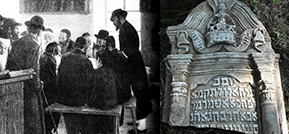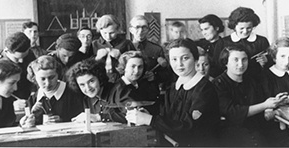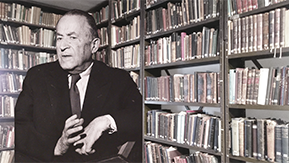The sixth annual delegation of the association took place from the 27th of July to August 10th, 2014. It numbered 10 participants: Israeli yeshiva students and students from the Bar Ilan University, together with staff members. As in the previous year, Dr. Boris Khaimovich, an expert on Jewish art, Dr. Ilia Luria, a scholar of Eastern European Jewry (both from the Hebrew University) and Ms. Marina Bruck from the department of Jewish Culture of the national university of Saint Petersburg headed the delegation.
The delegation finished the documentation of the Bolekhiv (Bolechów) cemetery and undertook the complete documentation of the cemetery in Tovste (Tluste). In addition, Jewish sites in Ivano-Frankivsk (Stanislawow), Tluste and Chortkiv (Czortkow).
The cemetery in Bolechow (see the report on the delegation’s activity there from 2013) was discovered to be one of the most important Jewish sites in Eastern Europe. Around 700 tombstones were discovered, photographed and documented during the work process (in addition to a similar number documented by the previous year’s delegation). Some of these stones dated back to the 18th century, while most were from the 19th century and the beginning of the 20th. A separate burial section for plague victims from the 1830s epidemic was also discovered.

Unlike Bolechow, the other destination visited by the delegation – Tluste – was a relatively small town, which in 1900 boasted 2,172 Jewish residents, out of a general population of 3,199. Despite its size, however, Tluste has a special place in the history of Jews in Eastern Europe. In 1734, Rabbi Israel Ba’al Shem Tov, the founder of the Hassidic movement, settled in the town, and it was during his stay in this town – according to Hassidic tradition – that his greatness as a mystic and an instructor of worship was discovered. In addition, this town’s graveyard hosts the grave of his mother, Sarah.
Our first testimony to the Jewish settlement in Tluste dates back to the second half of the 17th century.
In the nineteenth century, the Jews of Tluste traded in agricultural produce, timber, cloth, and alcoholic beverages. Hasidism was preponderant in the town. The wealthy members of the community were followers of the zaddik of Czortkow (a town 20 km to the north of Tluste), whereas shopkeepers, grain merchants, brokers and scholars adhered to Viznitsa Hasidism, and the artisans were followers of the zaddik of Kopychintsy.
Tluste was predominantly a Jewish town. Jews consistently made up approximately two-thirds of the population, while Ukrainians constituted about 20-30% and Poles only 11-12%. The central market area of town – surrounding the Catholic church – was comprised mainly of Jewish-owned shops and businesses, selling food, fabric and other household goods. A synagogue and Hasidic batei midrash stood on the opposite side of the main road through town, close to the northern end of the reservoir.
|
With the establishment of the Polish rule, the economic situation of the Jews deteriorated and more and more Jews migrated from the town. Despite this, the town continued to boast a lively social and political life, which included the operation of religious and Zionist parties, schools and many cultural and charitable Jewish organizations. |
|
|
With the fall of Poland in September 1939, Soviet forces occupied Tluste and neighboring towns. They remained there until June 1941.
Tluste was captured by the Germans on July 8, 1941, and the persecution and murder of local Jews began immediately. In March 1942 a ghetto was constructed in the Jewish quarter, which lay between the municipal square and the Great Synagogue of the town. The remaining Jews of the Tluste community were placed in the ghetto, along with many Jews from surrounding towns. Later on, the Jews who were banished from Hungary were moved to Tluste as well.
All of the ghetto’s residents were murdered in the Jewish cemetery and in the city street during two roundup operations, on May 27th and on June 6th, 1943. A monument has recently been erected on the site of their killing and burial. The synagogue and the batei midrash were destroyed, along with the majority of the homes in the ghetto and more than half of the tombstones in the Jewish cemetery, including that of Sarah, the Ba’al Shem Tov’s mother.
During the delegation’s work in the town about 500 tombstones from the Jewish cemetery – all that survived to this day – were photographed and documented. The majority of these date to the 18th and 19th centuries and the period before the Holocaust, but a few rare tombstones from the 17th century were also discovered. These constitute an important testimony to the antiquity and importance of the Jewish community of Tluste.






